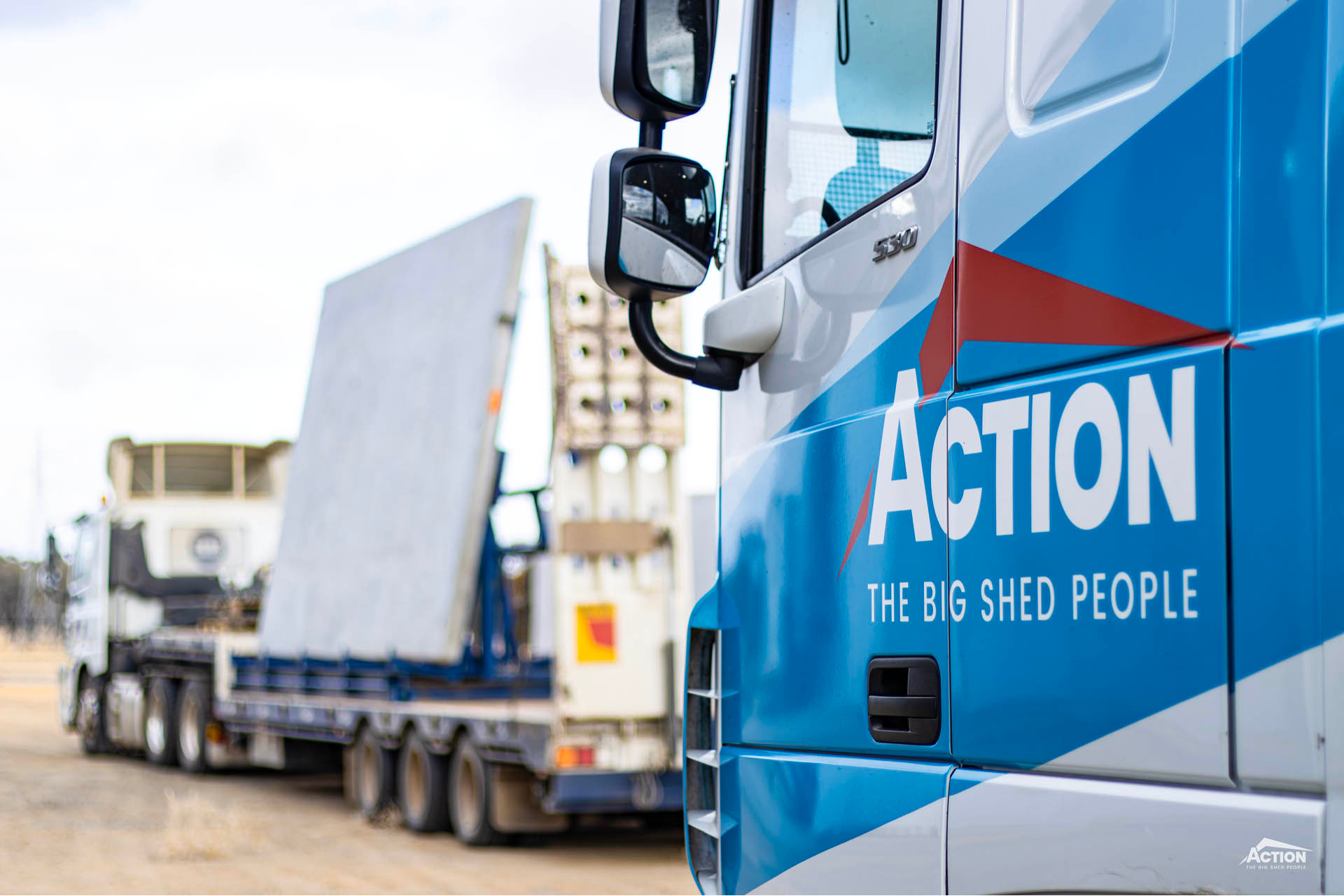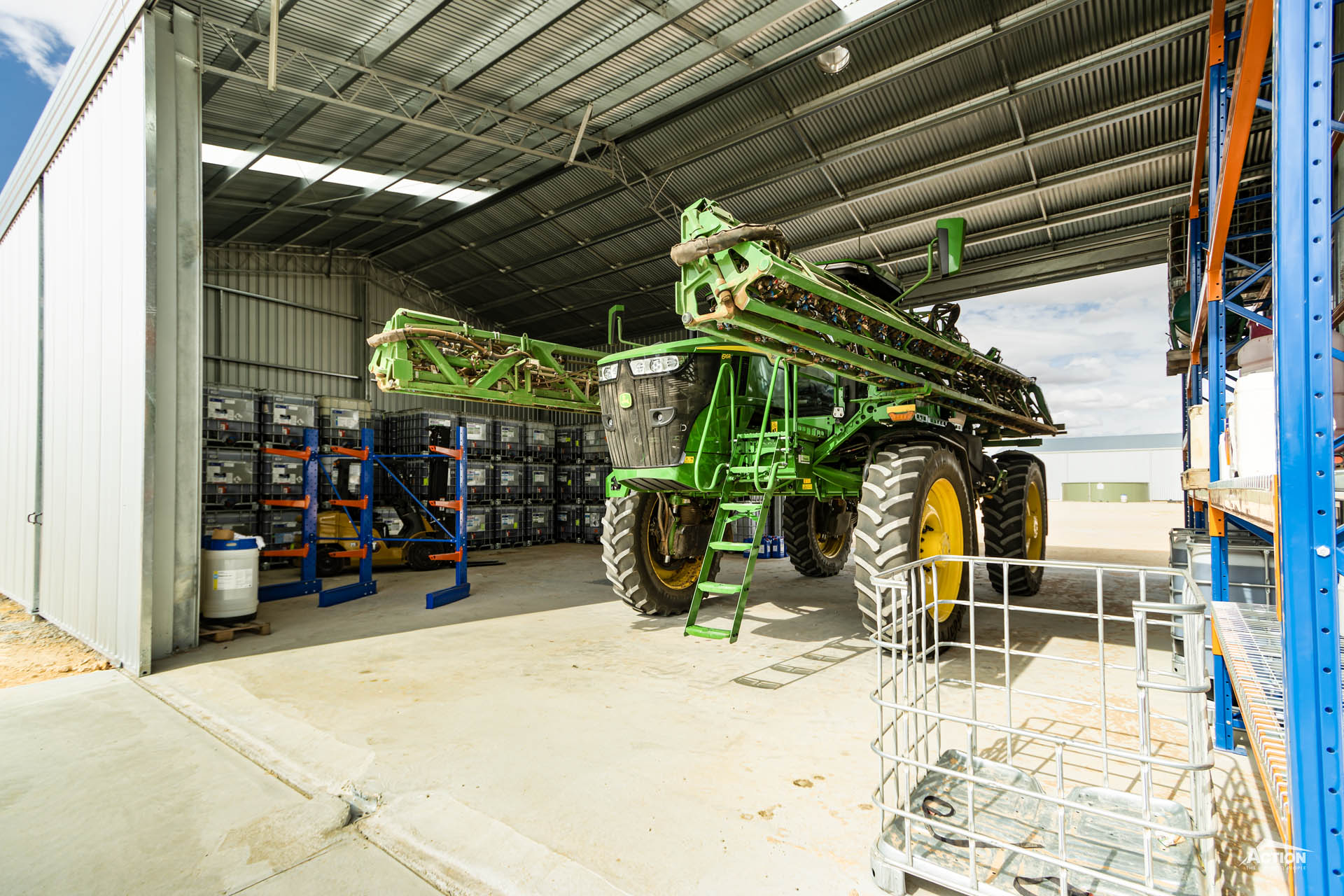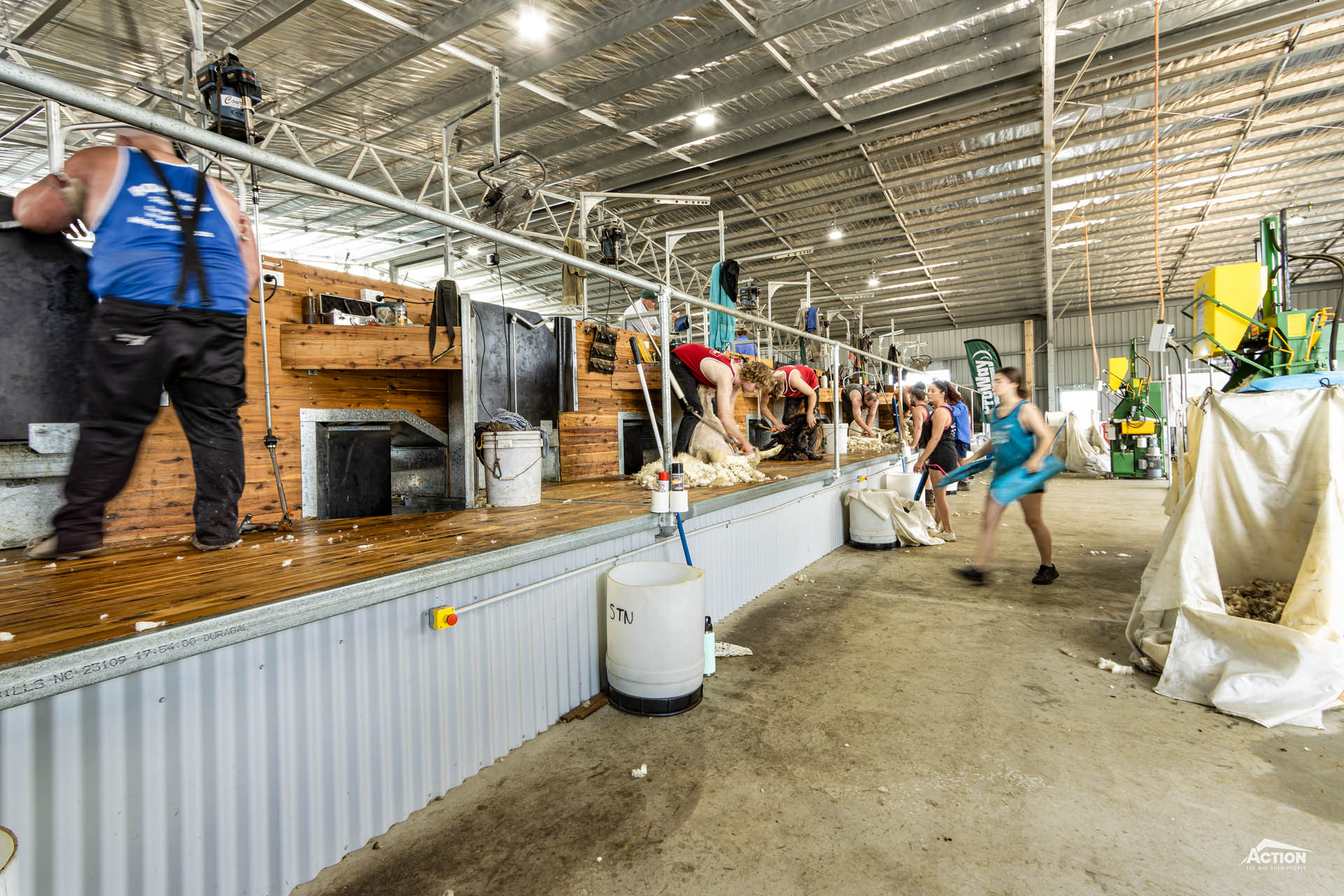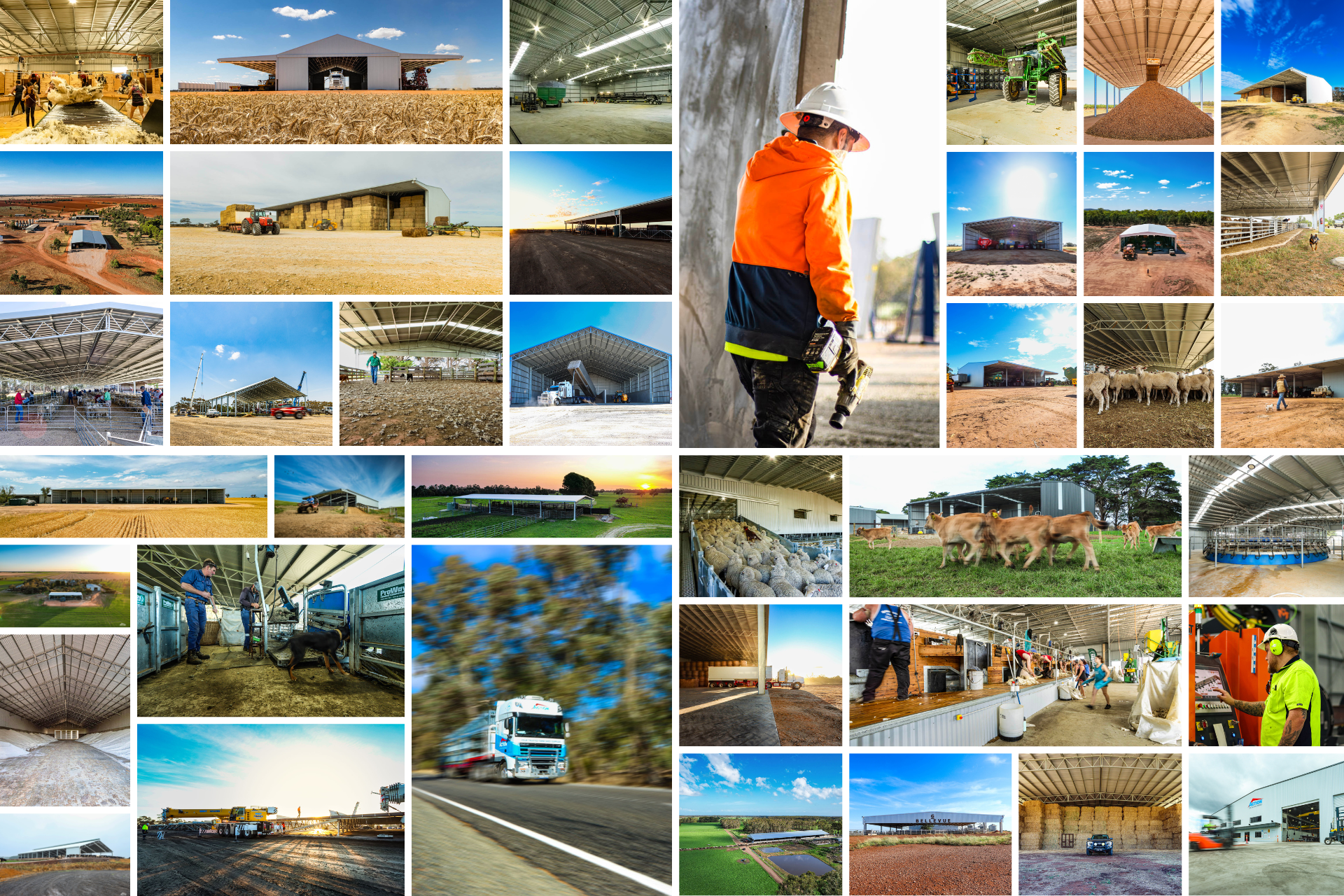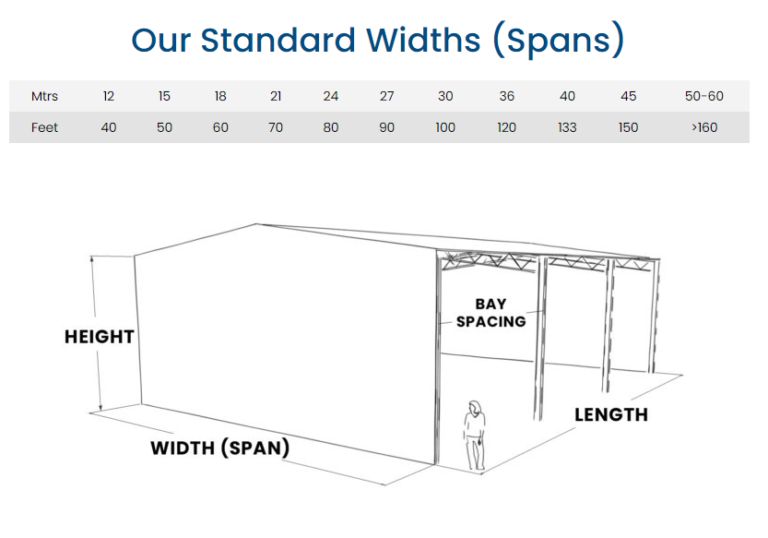On-farm storage and multi-use sheds have been popular projects over the past 12 months – and with input and market prices fluctuating, this is proving to be a smart move.
We chatted with Craig Henderson from Darcra Farming at harvest time to learn about their experience working with Action and what the impressive 6000 tonne storage shed will achieve for their operation.
A fully enclosed configuration with concrete panels, the shed can be used to store fertiliser, grain and machinery.
The project reflects the trend of investing in on-farm storage – albeit not all at this scale – to protect and futureproof enterprises from volatile prices and open up market opportunities.


Watch the video below to learn about the family-owned cropping enterprise and the important role quality shed infrastructure plays in protecting their livelihood.
Craig Henderson On Working With Action & What The 6000 Tonne Storage Shed Will Achieve
Read on for a project overview and to learn about the details that contribute to the success of the 6000 tonne storage shed.
You will also find a handy price guide for budgeting and a photo gallery for ideas and inspiration.
Project Overview
Configuration: Fully enclosed with steep roof pitch, concrete panels and canopies.
Size: 68m (L) x 24m (W) x 7.5m (H) with 12m canopies
Capacity: Approx. 6,000 tonnes
Build Date: 2024
Location: Watchem VIC
What The Project Achieves
As Craig explains, the 6000 tonne storage shed will provide several benefits.
Firstly, by providing storage flexibility along with the existing Action shed infrastructure it opens up opportunities such as buying fertiliser when prices are lower, or storing grain or hay until prices increase.
Plus, there is also flexibility in the shed design itself. For example, the bulk storage space could be segregated with l-panel walls so that multiple products can be stored in the shed at once.
Similarly, the cantilevered canopies provide an undercover maintenance area and shelter for large machinery – with no reversing required! This streamlines logistics and keeps the machinery running smoothly at cropping and harvest.

Why The Project Works
The first step to project success is always to have a clear objective of what you want to achieve – and what success looks like.
For example, Craig wanted to:
- Future-proof his business from high fertiliser prices
- Increase flexibility in his on-farm storage
- Ensure he was getting good value for money
- Work with a trusted partner who can deliver on his objectives.
The next step contributing to this success is a thorough planning process, from timing and site preparation to shed capacity.
Here are five main factors that helped achieve the project goal of cost-effective, future-proof and flexible storage.
1
Site Preparation & Layout
Site logistics and preparation should be among the first points you address in your project planning.
Darcra Farming’s shed shows the benefit of this approach.
The site layout allows adequate room for turning circles and a clear area on all sides of the shed, helping to provide safe access.
This is particularly important when working in with existing storage facilities nearby, including sheds and silos.
Sliding doors in the gables provide access to the shed itself with 12-metre openings at each end. This allows trucks to “drive-through.”
It is important not to overlook site preparation. Site preparation plays an important role.
A level shed pad with a good foundation and drainage helps keep the shed accessible during installation and when in use throughout the year.
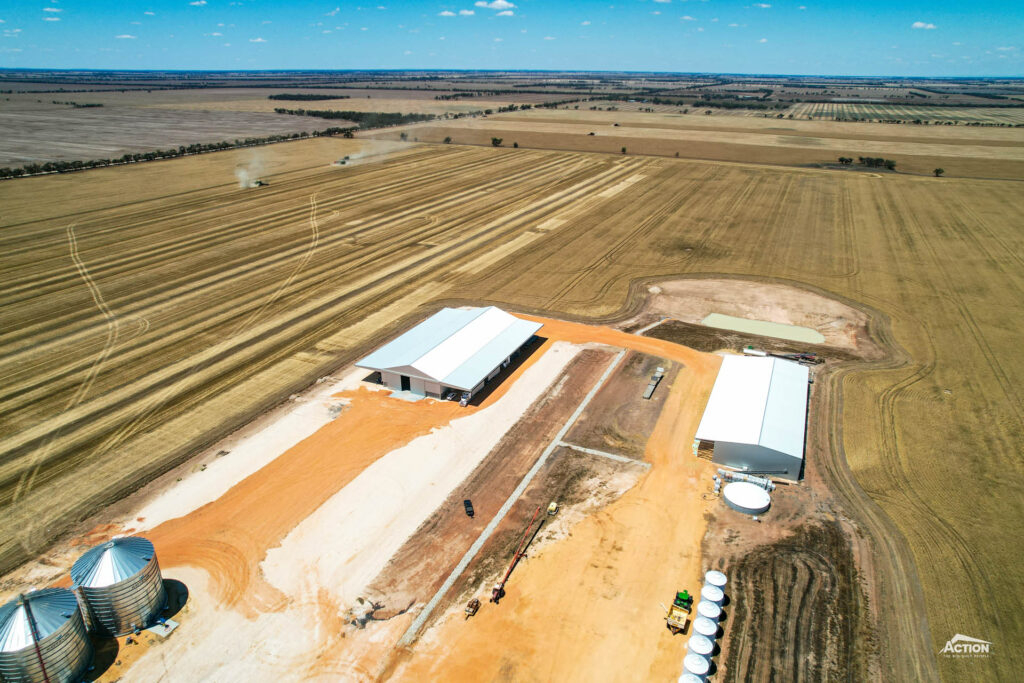
For suggestions on how to prepare your shed pad, check out the video below.
2
Multi-Use Storage
Adding a multi-use 6000 tonne storage shed into their storage mix provides Darcra Farming with flexibility and options.
Firstly, the fully enclosed configuration – along with the steep roof pitch and concrete panels – means the shed is well suited to storing fertiliser such as urea, DAP and MAP, or storing grains such as faba beans.
The bulk storage area can also be segregated with removable panels to store multiple products in the shed. This means the overall capacity of the shed isn’t reduced, which would be the case if permanent segregating panels were installed.
Plus, the shed could easily be used to protect valuable machinery and equipment when fertiliser or grain storage isn’t required. The canopies provide a handy maintenance area and easily accessible shelter too.
A multi-use design like this can also maximise your return on investment. And you can learn more about this here – The Benefits Of A Fertiliser Shed & How To Maximise ROI
3
Standard Span Size
A standard span size is a sure way to create a shed design that is both cost-effective and functional.
Craig has proved this on multiple shed builds, and this project was no exception.
The 24-metre span (the most popular span size in 2024!) allowed the project to progress quickly through both the manufacturing and installation stages, saving Craig time and money.
If you aren’t familiar with the standard span range, check out this article – What Are The Standard Spans For Farm Sheds?
4
Large-Scale Storage
Large, bulk storage sheds typically offer the lowest storage cost per tonne.
However, both the shed size and overall capacity need to be considered in the design stage to ensure you are getting the best value for your money – and have the storage space that you need.

For example, this project uses an 18-degree roof pitch and 3.5-metre-high concrete panels to accommodate the angle of repose of most grains and fertilisers. The steep roof pitch and 7.5m height also allow a truck to safely tip in the middle of the shed.
When it comes to shed width, as we mentioned earlier, the 24m span is cost-effective and practical – and the longer the shed, the lower the cost per tonne.
A 27m span is another popular standard span for large-scale storage. This is because it allows a truck to turn inside the shed.
It also pays to be aware of the bulk density of the product you are storing – particularly if you are storing multiple products. For example, the bulk density of Urea (750kg/m3) is approximately the same as storing 1/3 MAP (1000kg/m3) and 2/3 Urea combined.
Curious how the bulk density of your product will shape the capacity and shed size you need? Try out the calculators below.
Grain Storage Calculator
Use the farm shed calculator for grain storage to help you determine the best shed size for storing grain.
First, put in your shed size and grain type and then the storage volume and total tonnage will be displayed.
Fertiliser Shed Calculator
Use the farm shed calculator for fert storage to help you determine the best shed size for storing fert, .
Firstly, put in your shed size and fert type and then the storage volume and total tonnage will be displayed.
5
Canopies For Extra Coverage
Canopies contribute to the cost-effectiveness and functionality of the 6000 tonne storage shed.
At 12 metres wide, the canopies are impressive in size – and they provide some important benefits.
Firstly, canopies are a cost-effective way to gain extra coverage, without having to upsize the shed width.
Secondly, Darcra Farming are proving the benefits of easily accessible shelter. For example, four road trains can pull up under the canopies with no reversing required – and no columns in the way. This helps reduce stress and increase efficiencies at harvest.
And, as Craig mentions, the canopies also add another layer of protection, protecting the sides of the shed from moisture.
That’s a summary of the details that make this project a success!
So, how much does a 6000 tonne shed cost? It is an impressive design and a functional set-up, but what is the cost per tonne?
If you are interested in the numbers, check out the project price guide below. It is an approximate price range and is intended as a starting point for your budgeting.
Project Price Guide
In 2025, a similar project would cost approx. $750,000 – $1,000,000 including GST, concrete and installation.
This works out to be between $125 per tonne and $165 per tonne.
The price for your project will depend on details like the shed location (this is because delivery and concrete costs vary between locations) and whether you choose to customise the design with canopies (canopies will increase the cost per tonne).
For accurate pricing for your project, call us on 1800 687 888 – or submit a REQUEST A QUOTE form and we will be in touch.
And for all the inspiration you need, check out the gallery below!
Project Gallery
We love seeing an Action shed in action, and we were able to capture this project at harvest time.
Browse our favourite photos below.
If you found this project overview helpful, you might be interested in the resources below.
Useful Resources
- Fertiliser Shed Versus Silos (Pros, Cons & Prices)
- What Will 2025 Steel Prices Do?
- The Benefits Of A Fertiliser Shed & How To Maximise ROI
We hope you enjoyed learning about Darcra Farming’s 6000 tonne storage shed! It is an excellent example of how you can use shed infrastructure to create and capitalise on market opportunities – and future-proof your business.
To get your project planning underway, book a project consultation today!


